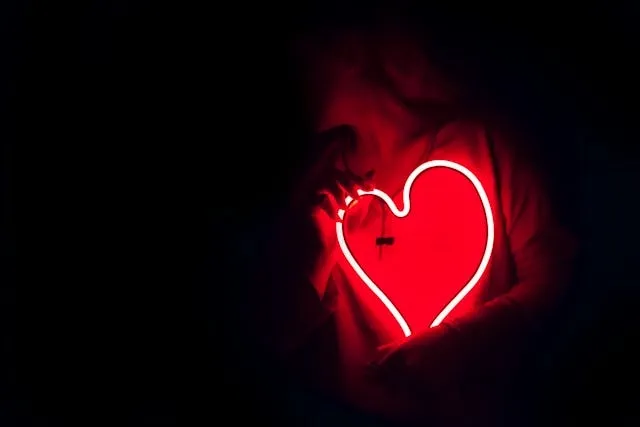Interesting Facts About Neon: Discovering Its Unique Properties And Applications
Neon is a truly fascinating element with unique properties and applications that have made it important for science and culture. Discovered in the late 19th century, its distinctive glow has captured imaginations worldwide, particularly in its widespread use as signs and lighting.
From creating captivating visual displays to vital applications in cryogenics, there are many interesting facts about neon. In this guide we explore its discovery, uses, and physical properties to showcase the value of this inert gas.

Key Takeaways
- Neon is a chemically inert with a range of applications. It is best known for its use in neon lights, but it also has practical applications in industry, science, and astronomy.
- Neon has a distinct orange-red glow when used in signage and advertising. But it is also crucial as a coolant in cryogenics, and it is non-toxic, stable, and rare on Earth.
- Neon remains indispensable in science and society with its widespread presence in modern culture and vital technological functions.
- We supply high-quality custom LED neon signs that use modern, energy-efficient to replicate the aesthetic of traditional neon signs with greater versatility and durability.
Most Interesting Facts About Neon
Neon is the fifth most abundant element in the universe, but it is surprisingly scarce on Earth. When an electric current passes through the gas, it creates a distinct red-orange glow, which is why neon is frequently used in lighting.
Unlike many other gasses, neon doesn’t react with most substances, so it is an extremely stable element. Here are a couple of particularly interesting facts about neon:
- Neon was first discovered by British scientists Sir William Ramsay and Morris W. Travers whilst studying liquefied air.
- Neon lights are efficient for use in signage. They consume considerably less energy than traditional incandescent bulbs whilst delivering a bright, vibrant illumination.
- Neon is vital in cryogenics, serving as one of the most efficient coolants due to its liquid range and low boiling point.
Today, neon signs have been largely replaced by LED-powered custom neon flex signs, but their legacy remains iconic.

How Did Neon Get Its Name?
The name for neon is derived from the Greek word ‘neos’, which means ‘new’. This name was coined by the British chemist Sir William Ramsay and his assistant Morris Travers upon discovering the gas in 1898. When Ramsay and Travers managed to isolate this new element from liquefied air, they were thrilled by the bright red-orange glow it emitted when electrified - it was unlike anything either had seen before.
They chose the name ‘neon’ to reflect the novelty and excitement of discovering an element that was previously unknown to science. Since then, neon has become synonymous with this enchanting glow, which is most famously associated with neon signs all over the world. Thanks to these signs, the word is now often associated with bright, vibrant colors that are highly visible and draw attention.
What Is The Symbol Of Neon?
The chemical properties of neon are unique to the gas, and have been carefully studied and recorded for well over a century now. The chemical symbol for neon is ‘Ne’, and it occupies the 10th position on the periodic table.
Neon belongs to the group of noble gasses, which are characterized by their lack of reactivity due to their complete outer electron shells. The chemical symbol ‘Ne’ is universally recognized in scientific communities, and it serves as a simple abbreviation of the element’s name.
Here are a couple of neon facts:
- It is a monoatomic gas. This means it exists naturally as single atoms rather than molecules.
- Its inert nature and stability have made it important in scientific research and industrial applications.
- The gas is probably best known for the role it plays in creating neon lights and signs that are iconic in popular culture.
Make a statement with a unique design that's all your own
Light up your life with our custom LED neon signs!
Order now and let us bring your vision to life
How Old Is The Neon Element?
The discovery of neon in 1898 by Sir William Ramsay and Morris Travers whilst experimenting with liquefied air marks the start of mankind’s interactions with the gas. This discovery came only a few years after the identification of other noble gasses like argon and helium.
In the context of the wider universe, however, neon is far older than that. Neon atoms have existed since the Big Bang, so they are actually billions of years old. The gas produced the cores of stars through the fusion of carbon and oxygen; a process that has been taking place since the birth of the universe. So, next time you see a neon light displaying a playful quote next to a display of confetti balloons, think about just how old the gas in those tubes actually is.
The discovery of neon in a laboratory was a turning point. By the early 20th century, the gas was widely used in neon signage that became a defining feature of global culture for decades.

How Does Neon Work?
When learning interesting facts about neon lights, it’s important to understand how neon signs work. Neon emits light when an electric current passes through a sealed tube of neon gas. The gas particles ionize and glow, creating that iconic aesthetic we all know.
Neon works like this because its atoms release energy when they return to their normal state after being excited by the electrical current. This energy release appears as visible light, with neon producing a distinct orange-red color. The process of gas ionization is the fundamental principle of neon light technology.
The brightness and vibrancy of neon lights make them a popular choice for both decorative fixtures and advertising. Today, many choose the more energy-efficient LED neon signs to achieve a similar aesthetic, but the iconic look of traditional neon signs is still sought-after.
Neon Gas’s Luminous Legacy
Since it was discovered, neon has left quite a legacy for iconic lighting. It was one of the most popular solutions for advertising for much of the 20th century, and also has many applications in art. Neon lights were a symbol of modernity in the early 20th century, making up countless vibrant signs in urban environments around the globe.
Its cultural impact extended beyond signage, as it became iconic in things like:
- Visual art
- Architecture
- Cinema
The influence of neon persists today. Many vintage neon signs are preserved as artifacts, and it was the inspiration for things like custom LED signs and modern lightboxes. Its applications also go beyond lighting, as it has found various deployments in scientific and industrial fields like cryogenics.
The legacy of neon is one of both aesthetic brilliance and practical utility. It has cemented its place in human history.
Star Creation
If you study neon emission in the early universe, you learn that it plays an important role in the life cycle of stars. It is produced in the cores of massive stars as nuclear fusion takes place, whereby lighter elements are transformed into heavier ones.
When these stars explode in supernovae, it scatters neon and other elements throughout the universe, contributing to the formation of new planets and stars. Astronomers use neon emission lines to help study the composition of distant stars and galaxies, as its presence reveals important information about the formation and evolution of stars.
With this cosmic connection, it is clear that neon is more than just a marvel on planet Earth. It is a fundamental component of the life cycle of the universe, and its importance should not be underestimated. For space lovers, this should be one of the more interesting facts about neon gas.
What Are 5 Ways Neon Is Used?
Neon has a range of applications in modern technology and culture. Here are 5 of the ways the gas is commonly used in the human world:
- Neon signs: Though traditional neon lights have been largely replaced by products like our custom aesthetic neon signs powered by LED tubing, glass neon signs are widely recognized for their vibrant colors in advertising and artistic displays.
- High-voltage indicators: Neon gas is deployed in devices like voltage testers as it is highly visible when electrified.
- Cryogenics: Liquid neon is highly effective as a coolant, particularly in industrial and scientific settings.
- Neon lasers: These high-precision measurement instruments are commonly used in scientific research.
- Television tubes and displays: Neon gas was a key component in older TV screens and computer monitors, playing a part in illuminating pixels.
These interesting facts about neon show just how widespread its use in human society has been.
Stand out from the crowd with a one-of-a-kind design
Illuminate your world with our custom LED neon signs!
Order now and let us help you make a statement
Make Your Custom Neon SignsWhat Is So Special About Neon Lights?
Neon lights are special because they have a distinct glow that occurs naturally when an electric current passes through the neon gas. Unlike other lighting options, neon emits a unique and vibrant orange-red hue, which you can combine with other gasses to create a spectrum of colors.
With this ability to create eye-catching, continuous illumination with no flickering, these lights are perfect for signage and art displays. Additionally, neon lights are more energy-efficient and durable compared to incandescent bulbs. Of course, both of these lighting solutions have been largely replaced by cutting-edge LED technology, but they remain as icons of a bygone era that has inspired the modern solutions we use today.
Neon lights have a nostalgic, vintage charm that influences modern design and culture. And there are many funny broken neon sign fails that have provided entertainment for countless people over the years. Neon lights are a blend of technology and artistry, offering a unique visual experience.
What Color Is Neon?
Neon gas is invisible but, when electrified, it emits a bright orange-red glow. This vibrant hue is instantly recognizable, and it is the natural color of neon lighting. However, it is possible to combine neon gas with other noble gasses, or to use colored glass for the tubing that makes up the sign. By doing these things, you can create neon lights that glow:
- Blue
- Green
- Pink
- Yellow
Neon itself is colorless in its non-ionized state, but you will see the brightest neon light colors when it is electrified, and this is what has made it famous in art and signage. With modern LED neon signs, you have an even wider range of color choices to make the aesthetic you want. But the brilliance of the iconic neon glow is effective in grabbing attention, which has made it a popular choice for displays and signage.
Create a design that's uniquely yours
Brighten up your space with our custom LED neon signs!
Order now and let us help you add a pop of color
What Are The Discovery And Properties Of Neon?
As mentioned, neon was first discovered in 1898 by Sir William Ramsay and Morris Travers when they were conducting experiments with liquefied air. As a noble gas, neon is inert, so it doesn’t react with other elements and is a highly stable gas.
Neon is also one of the lightest noble gasses, and it has an extremely low boiling point of -246°C, which is why it is such an ideal coolant for use in cryogenics. Though it is the fifth most abundant element in the universe, neon is quite rare on Earth and is only found in trace amounts in our atmosphere.
The scarcity of neon on Earth contributes to its relatively high cost in comparison to other gasses used in lighting. This is one of the reasons custom LED signs tend to be a more affordable option, in addition to offering superior flexibility, energy-efficiency, and durability.

Why Is Neon So Famous And Special?
Neon rose to fame in the early 20th century when neon lighting was first introduced to the world. It was instrumental in creating bright, glowing signs that quickly became synonymous with city life in entertainment districts like Las Vegas and Times Square, where you will see some of the most iconic neon signs.
Neon’s fame is about more than just its glow, however. It is also known for features like:
- Energy-efficiency
- Longevity
These characteristics have contributed to its popularity in advertising. Over the years, the nostalgic and iconic status of neon has persevered. It represents vintage charm and modern coolness in equal measure. Its cultural presence spans art, architecture, and cinema, with neon lighting frequently used to evoke a timeless aesthetic or a sense of urban vibrancy.
Create a unique design that captures the essence of your love story
Add a touch of romance to your special day with our custom LED neon signs!
Order now and let us help you make your wedding day unforgettable.
Make Your Custom Neon SignsFrequently Asked Questions About Interesting Facts About Neon
What Are 5 Fun Facts About Neon?
Neon is the fifth most abundant element in the universe, but it is rare on Earth. It emits a red-orange light when electrified, and it was discovered in 1898, leading to the first neon signs in 1910.
What Are 3 Uses Of Neon?
Neon is commonly used in advertising signs, high-voltage indicators, and as a coolant in cryogenics. Its properties make it a useful resource in both scientific and artistic applications.
